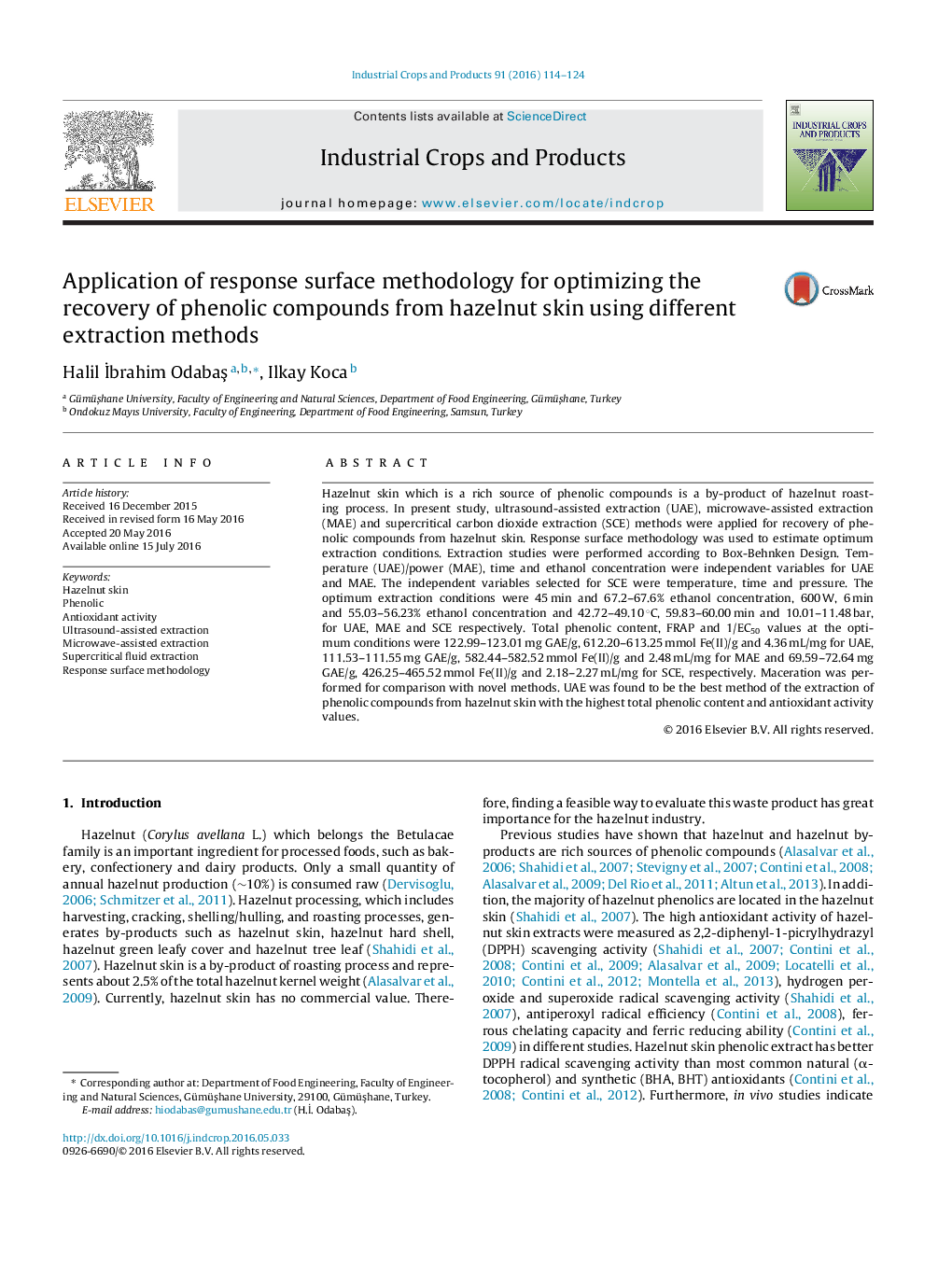| Article ID | Journal | Published Year | Pages | File Type |
|---|---|---|---|---|
| 4511988 | Industrial Crops and Products | 2016 | 11 Pages |
Hazelnut skin which is a rich source of phenolic compounds is a by-product of hazelnut roasting process. In present study, ultrasound-assisted extraction (UAE), microwave-assisted extraction (MAE) and supercritical carbon dioxide extraction (SCE) methods were applied for recovery of phenolic compounds from hazelnut skin. Response surface methodology was used to estimate optimum extraction conditions. Extraction studies were performed according to Box-Behnken Design. Temperature (UAE)/power (MAE), time and ethanol concentration were independent variables for UAE and MAE. The independent variables selected for SCE were temperature, time and pressure. The optimum extraction conditions were 45 min and 67.2–67.6% ethanol concentration, 600 W, 6 min and 55.03–56.23% ethanol concentration and 42.72–49.10 °C, 59.83–60.00 min and 10.01–11.48 bar, for UAE, MAE and SCE respectively. Total phenolic content, FRAP and 1/EC50 values at the optimum conditions were 122.99–123.01 mg GAE/g, 612.20–613.25 mmol Fe(II)/g and 4.36 mL/mg for UAE, 111.53–111.55 mg GAE/g, 582.44–582.52 mmol Fe(II)/g and 2.48 mL/mg for MAE and 69.59–72.64 mg GAE/g, 426.25–465.52 mmol Fe(II)/g and 2.18–2.27 mL/mg for SCE, respectively. Maceration was performed for comparison with novel methods. UAE was found to be the best method of the extraction of phenolic compounds from hazelnut skin with the highest total phenolic content and antioxidant activity values.
